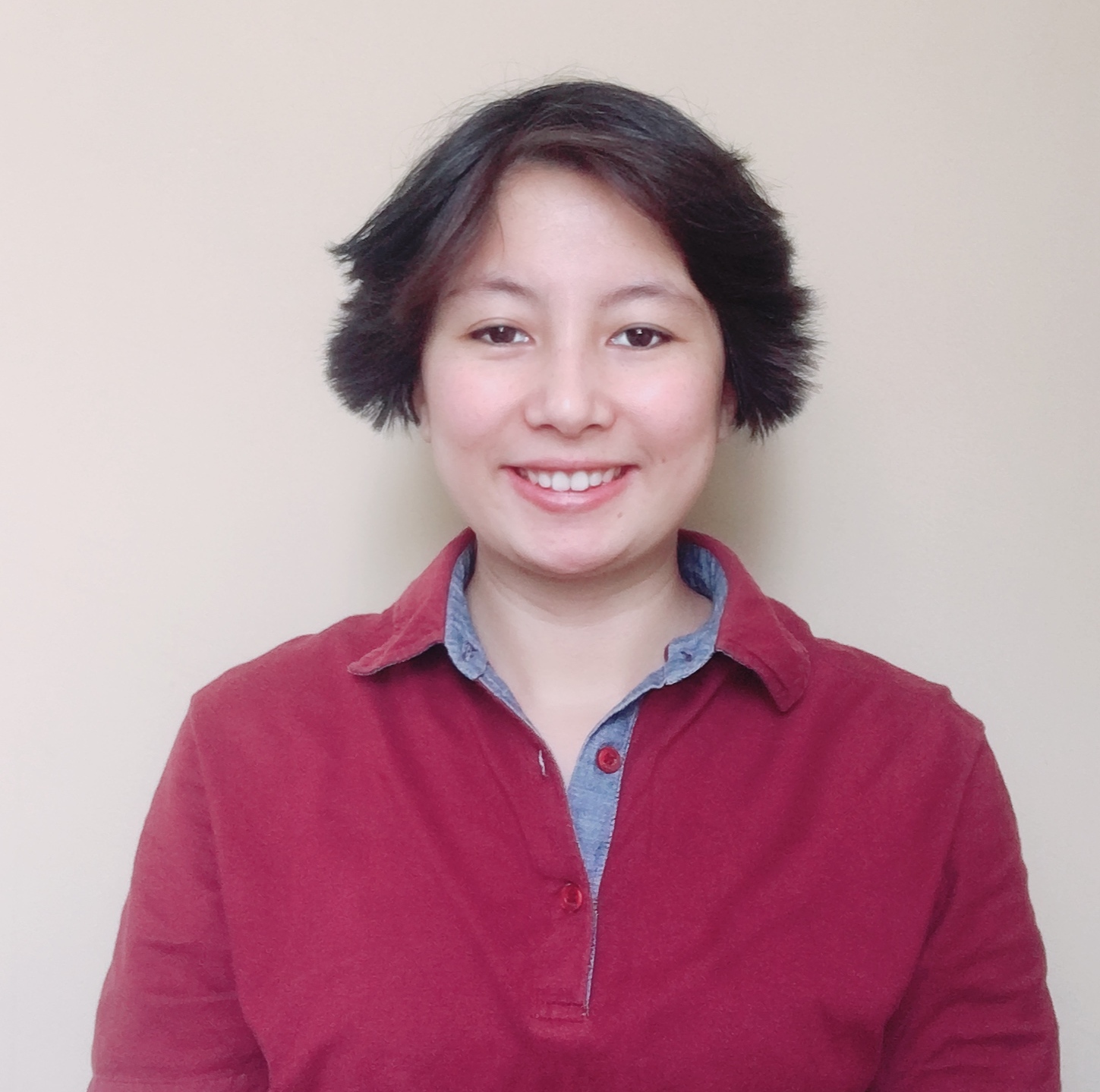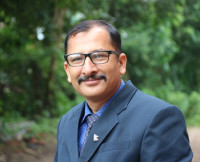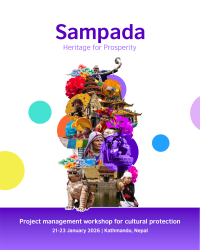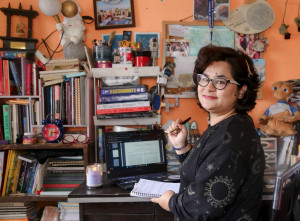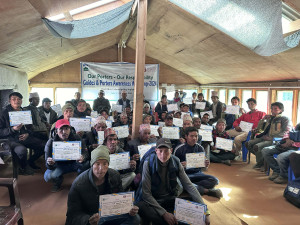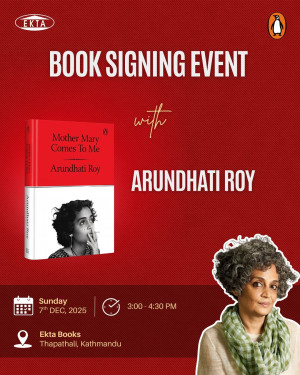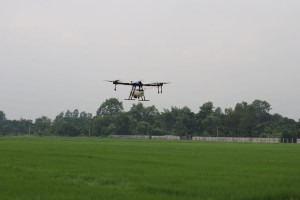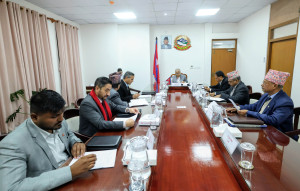Culture & Lifestyle
What meditation is and how to truly practice mindfulness
Mindful meditation has fast become a trending idea to increase productivity, but its pursuit is different from what people have made it to be, say two Buddhist monks.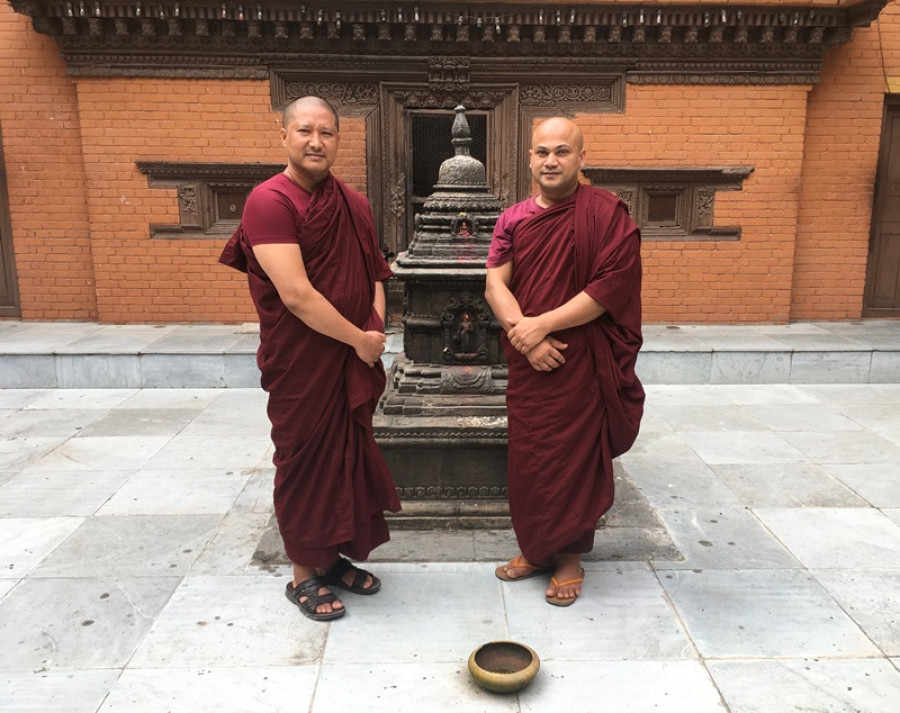
Srizu Bajracharya
Entering Shree Sumangala Vihara in Lukhusi, Patan, feels like being transported to another realm. The vihar’s large courtyard is silent, and there are no visitors, save some workers and the eight monks who live in the monastery. Many activities of the vihar have been suspended because of the Covid outbreak and the vihar looks vacant. But occasionally echoes of children playing in the neighbourhood reverberate through the walls. And yet, the milieu of the place works as a sedative to calm an anxious human strolling in the premises. Here you will find yourself speaking softly, even if you are loud.
At the second meditation hall to the right, Ven Panna Sara and Ven Pannaratana, two Buddhist monks, look unperturbed by the silence that fills the place. They have finished their morning rounds of meditation, or perhaps they are still meditating, as they sit down to talk about meditation in the empty hall. “Meditation is not about the hours you make for mindfulness, it’s a conscious pursuit you can practise anywhere, anytime and for any amount of time,” says Panna Sara.
Over the past few months since the outbreak of Covid-19, mental health has become a critical concern. As people live through chaos ensued by the invisible virus, people have become more anxious and stressed. Many proponents of meditation, such as Tara Brach, an American psychologist and meditation teacher, have also been suggesting using meditation as a means to ease the mind in these uncertain times.
In fact, many studies have revealed that meditation helps reduce stress, helps people to keep their calm and make them aware and more attentive. And people are turning to meditation more and more. In this pandemic itself, downloads of meditation and mindfulness apps have surged up: in April, Calm, a meditation app garnered 3.9 million downloads.
One of the primary reasons meditation is getting this much attention is the idea that it increases productivity and alleviates stress. But share this idea with a monk and they will tell you: “Meditation is a way of life, and it’s not to reduce stress but to understand suffering and the end of suffering.” That’s what Panna Sara said.
What is meditation?
Panna Sara’s eyes are clear and focused as he crafts definitions of meditation. And it is quite evident with his explanation there is no ‘one’ way of defining it, because there are so many aspects to meditation: Meditation to be heedful, meditation to work on something, meditation to grow and meditation to eradicate negativity.
There are different types of meditation and different techniques—more than 40, say the two monks who have been practising for the past 30 years. And in front of Panna Sara and Pannaratana, it is impossible to talk about meditation without discussing Buddhism, after all this is where mindful meditation, such as vipassana, comes from.
“Meditation is a process of being aware and conscious of things. And it’s as much about being focused on doing something,” says Panna Sara.
“It’s about controlling the drifting mind to focus on things that are positive and optimistic,” adds Pannaratana.
Both Panna Sara and Pannaratana, friends from childhood, were raised in a meditation centre as Buddhist monks in SriLanka. And since then, meditation has become a part of their lives.
Is getting started difficult?
“The early days were quite difficult. As a child, my mind used to go around all places. And it was hard to keep still and to understand why we were practising it at first. But then slowly, with the guidance of our guru, I started looking forward to it,” says 40-year-old Pannaratana. According to the monk, it is natural for beginners to feel lost and distracted. “What’s important is you continue,” he says.
After finishing their high-school, the two friends had also spent time inside dhyan kutis, forests to practise meditation alone. They would sit isolated for hours, for days, with no interaction with the outside world, meditating under trees, only to return for meals. And it was that experience that made the two monks get their meditation right. Hours of devotion had made them see the strength of being conscious and aware.
“I think it was during that time that I felt that meditation is powerful and effective. I was alone in that jungle, but I could control my fears and be aware of myself,” says Pannaratana.
How does meditation help grow the mind?
While most people think meditation requires people to sit down, Panna Sara shares there are many positions to choose from. One can meditate while sitting, standing, walking or sleeping, he says. “When you get better at it, you can also meditate while doing anything, which is also called chatusampajanya meditation,” he says.
Meditation is an act of gaining consciousness, and hence with practice, one can observe it anywhere. “Meditation is doing everything with an awareness that does not leave you,” says Pana Sara.
And this awareness is what helps practitioners of meditation to be conscious, awakening the mind to the knowledge around them and in them. “This wisdom is not just about understanding knowledge—this is vipassana itself, that helps one differentiate between the negative and the positive in life,” says Pana Sara.
How to get started with meditation?
Before the pandemic, Pana Sara used to host a meditation programme on the third Saturday of every month with more than 80 participants on an average. The meditation programme used to start with Buddha puja, followed by a meditation session under the supervision of the guru. After which, participants would share their experience of meditation. Buddhist practitioners of vipassana believe that people must have guidance while meditating: when not done correctly, it can cause more harm than good.
The ideal way to start practising meditation is to just follow one’s breathing, says Panna Sara. “Recognising one’s own breath can help slowly open a person to see their body’s intricate changes,” says Panna Sara. After one becomes more aware of one’s own breaths, then they move on to focus on larger areas of the body, as vipassana meditation works through layers of the human psyche and thus, a teacher’s presence is indispensable, he says.
“Of course, once you have practised vipassana you can practise on your own, but over time as we are all going through changes, it’s important that we have someone to reflect our experiences with,” says Pannaratana.
But many have started meditating not to grow with the process or to find enlightenment but to reduce stress and suffering. They want results. For example, many people practise meditation to treat their blood pressure, depression, anxiety and many mental health conditions.
“But meditation is not just a cure to ailments, rather the cure is a byproduct of the process of being aware and focusing on the positive side to life which reduces the worry and the resentment you feel. And in the process, you also learn to detach yourself from such suffering,” says Pannaratna.
“It’s not to say it doesn’t work; it’s just that practising meditation is not a one-time exercise, it's something you practise every day, it’s an unfolding path,” he says.
But today, meditation has become a trend, rather a product that many institutions and app companies capitalise on as a necessity to overcome these uncertain and speedingly changing times. Few regard meditation as a way of life. “Meditation can help people in many ways, yes, but the intention of it is beyond just tackling the problems that we go through,” says Panna Sara. “And that is something people are yet to understand.”




 10.12°C Kathmandu
10.12°C Kathmandu